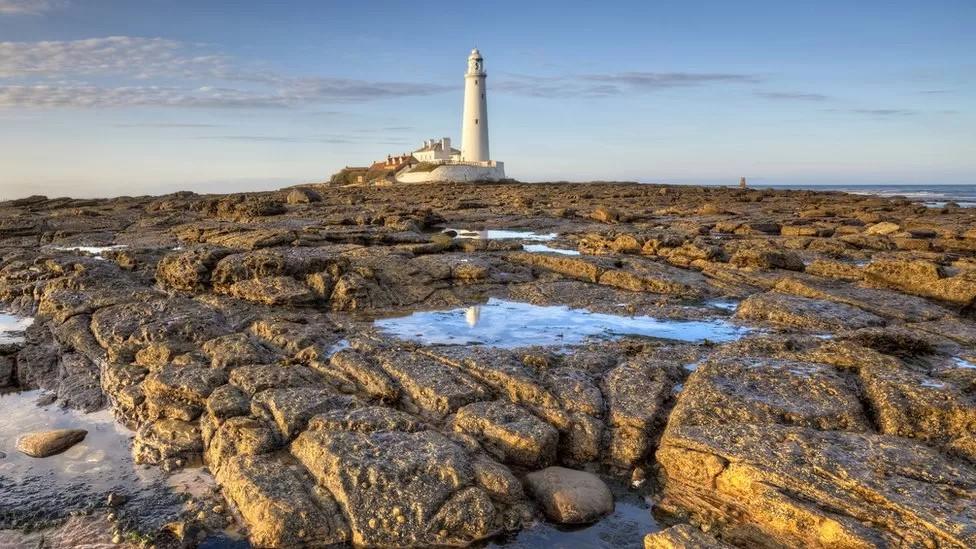Hadrian's Wall altered to deter sightseers from clambering on top
- Published

Sunrise at Steel Rigg in Northumberland, with Hadrian's Wall in the foreground, as well as into the distance in the background
A section of Hadrian's Wall has been repaired after it collapsed under the weight of sightseers.
Steel Rigg in Northumberland was placed on Historic England's At Risk Register when it was damaged by visitors clambering on it to take photos.
It was removed from the list after the wall's surface was made more uneven in a bid to deter people walking on it.
Dr Jane Harrison, a community archaeologist, said some changes were made to make it "not so inviting".
'No blame involved'
Dr Harrison, who worked on the project, said part of the ancient wall near the car park had collapsed.
"It's simply weight of interest - people climbing up on it to walk on it, to take those lovely photos and the weight of people has caused it to belly out and collapse," she told BBC Radio Newcastle.
"We all used to [do it], I remember doing it, the trouble is now the wall is so popular and that particular stretch has so many visitors that their hopping up on and walking on it is causing it to collapse."
It has been reprofiled in an attempt to "persuade" people not to walk on top of it.
"They have put a more uneven surface on the top of the wall, planted more tufty grass up there so it's not so inviting," she added.
Port Carlisle in Cumbria, which is also part of the 73-mile wall, has also been removed from the list.

St Mary's Island is home to a nature reserve meaning drones cannot be flown there
Also coming off the list, external is the Grade 1-listed Holy Trinity Church in Sunderland, which was built in the early 18th Century.
It has now been turned into community hub Seventeen Nineteen, named after the year it was built.
However, St Mary's Conservation Area in Whitley Bay has been added to the register due the pressure of increased visitor numbers.
Martin Wills, from Historic England, said a building being put at risk was not "bad news" as it allowed work to be prioritised and attract funding.
"There's no blame involved here, heritage assets are difficult to look after.
"They take a lot of time, energy and resource but through the heritage at risk register we can prioritise what we work on and hopefully in a few years the buildings or sites that have gone on this year will be coming off."
Other sites put at risk include the Church of St Paul in Jarrow, South Tyneside, after structural defects were found, and the coal drops at the National Railway Museum in Shildon, County Durham.
A total of eight historic buildings and sites in the North East have been added to the register because of their deteriorating condition and 13 sites have had their futures secured.

Follow BBC North East & Cumbria on Twitter, external, Facebook, external and Instagram, external. Send your story ideas to northeastandcumbria@bbc.co.uk, external.
Related topics
- Published3 July 2022
